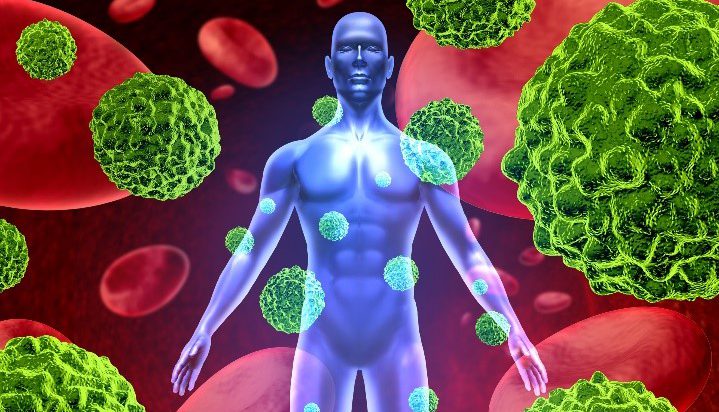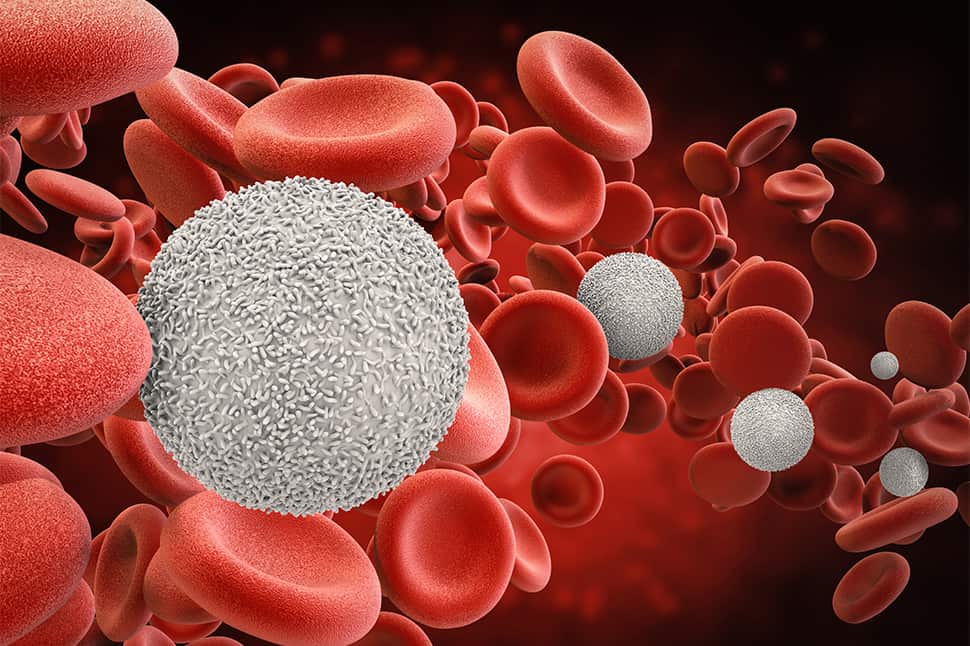How Many Stages Are There In Blood Cancer? As you can imagine, this is a serious disease that has the potential to cause a lot of damage to your body. The average cancer patient is diagnosed with blood cancer once every 30 seconds.
Blood cancers are a group of cancers that affect the blood and immune system. This includes a range of conditions, including leukemia, lymphoma, and multiple myeloma.
However, each type of blood cancer has a different prognosis. Some patients live for many years after being diagnosed, while others die within a few months.
Cancer is a serious disease. It’s the second-leading cause of death in the United States. According to the American Cancer Society, 1.6 million people in the U.S. were diagnosed with cancer in 2015.
However, when it comes to blood cancers, there are only three main types. These are leukemia, lymphoma, and myeloma. Each of these types can be further classified into stages. For example, leukemia can be acute or chronic, while lymphoma can be Hodgkin’s or non-Hodgkin’s.
Most people have heard of blood cancer. The common types are leukemia and lymphoma. While they sound similar, two very different diseases affect the same type of cells in our bodies.
Blood cancers are some of the deadliest types of cancer. They often affect the white blood cells that fight off infections and other disease-causing agents in the body. The types of blood cancers are usually classified into two main groups: leukemia and lymphoma.
You can check out the stages of each type of cancer on the American Cancer Society’s website. This will give you an idea of how common it is and how it affects patients.
You can also check out this page on the National Cancer Institute’s website. This will give you more information about the different types of blood cancers and their stages.
Blood cancers are some of the deadliest diseases in the world today. However, they don’t always have to be.
If you’re wondering what stage of blood cancer your loved one has, you can visit the Blood Cancer Registry.
We all know that blood cancers can be fatal, but what exactly is blood cancer?
This blog post will discuss the different stages of blood cancers and the types of treatments available.
What is blood cancer?
Blood cancer begins in cells of the blood and is called hematologic malignancies. Hematologic malignancies are cancers of the blood-forming organs and tissues, including the bone marrow, lymph nodes, spleen, liver, and intestines.
Hematologic malignancies are the most common type of cancer diagnosed in children. They are also the most frequent cause of death among children.
These cancers occur in many different forms. They may start in the bone marrow, where new blood cells are made. They may develop in the lymph nodes, where white blood cells travel to fight infection. Or they may begin in the spleen, where red blood cells are produced.
Blood cancers are types of cancers that affect the blood. Most often, these cancers start in the bone marrow. Sometimes these cancers spread to other parts of the body. This makes treatment more difficult and increases the risk of death.
Most people have never heard of blood cancers because they aren’t very common. However, the good news is that they are curable if caught early.
There are many types of blood cancers, but leukemia and lymphoma are the two most common types.
If you’re interested in blood cancer, I recommend reading about the different blood cancers below.
Types of blood cancers
Blood cancer is cancer that begins in blood cells. This means it starts in the bone marrow, spleen, or lymph nodes.
Blood cancers affect different types of blood cells and include many diseases. Some blood cancers develop in the bone marrow, while others begin in the lymph nodes.
Several types of blood cancers include leukemia, lymphoma, and myeloma.
Blood cancers are different from solid cancers like breast cancer and lung cancer because they grow inside the blood cells.
Blood cancers also differ from cancers that start in other tissues, like skin cancer. In those cancers, the growth does not begin in the blood cells.
The causes of blood cancers are not known. Most blood cancers occur randomly and are not inherited.
Most people diagnosed with blood cancers survive. However, treatment options can be very effective, especially for some types of blood cancer.
Stages of blood cancer
It’s important to remember that you won’t have any symptoms when you first start to develop blood cancer. This means that the disease could be detected at any stage.
You can check this by having a blood test.
Blood tests can detect abnormalities in your white blood cells.
They may also show if cancerous cells are circulating in your blood.
These tests can be done as a routine part of a physical exam or a regular check-up.
Understanding these stages is important because this knowledge helps determine the kind of treatment you may need. This will also help you to understand the disease process better.
The first stage is called the diagnosis stage. It’s time you’re told you have cancer. During this time, you don’t know if you’ll be cured or if you’ll die from the disease. This is the most dangerous stage.
There are several blood cancers, and they all have their stages. To learn more about each class, I suggest reading this Wikipedia post.
The best part about cancer treatment is that it’s often effective. But it can also be challenging and expensive, especially if you have advanced cancer. This means that you may have to take a while to recover from your treatment and feel better.
Blood cancer – symptoms
This can be very difficult for someone without any experience with this particular type of cancer. The truth is, you won’t know until you have symptoms. This is why it’s important to be proactive. By learning about blood cancer, you can become aware of any changes in your body.
If you notice any of these symptoms, please see your doctor immediately.
Blood cancers are malignant tumors of blood-forming tissues such as bone marrow, lymph nodes, spleen, liver, and skin. They are the second most common type of cancer after lung cancer.
The main types of blood cancer include leukemia, lymphoma, multiple myeloma, and myelodysplastic syndrome.
The most common symptoms of blood cancer are fatigue, weakness, sore throat, fever, and shortness of breath.
Blood cancer is a type of cancer that starts in blood-making cells.
The most common type of blood cancer is leukemia, which happens when too many immature white blood cells develop into different types of cancer cells.
There are two main types of leukemia: acute lymphoblastic leukemia (ALL) and acute myeloid leukemia (AML).
In ALL, the immature cells in the bone marrow start to grow abnormally, crowding out normal blood-forming cells.
In AML, the immature cells in the bone marrow stop growing and start dividing uncontrollably.
Blood cancers can affect children, teenagers, and adults. They are often diagnosed together, so people with ALL may also have AML.
Symptoms of blood cancer include unexplained fatigue, fever, night sweats, rapid weight loss, and pain in the bones or joints.
Leukemia can cause severe anemia, a condition in which the number of red blood cells is low.
Some people may have symptoms for months before being diagnosed.
Frequently Asked Questions (FAQs)
Q: Is there more than one stage of cancer?
A: When it comes to blood cancer, there are four stages: diagnosis, treatment, remission, and relapse. Most people go through each stage in their lifetime.
Q: How does a person know if they have cancer?
A: If a person has any signs or symptoms of cancer, such as lumps, sores, unusual pain, bleeding, weight loss, shortness of breath, or bruising, they should visit their doctor immediately. A doctor can then order blood tests and X-rays to confirm if a person does have cancer.
Q: What are the treatments for blood cancers?
A: The treatments depend on the type of cancer and its stage. There are different types of blood cancers, and each type requires another treatment.
Q: Is there more than one stage in blood cancer?
A: Yes, it is different for everyone, but the stages generally are: diagnosis, treatment, remission, and recovery. Treatment includes chemotherapy, stem cell transplant, or radiation. A successful transplant means the cells have taken hold, the cancer is gone, and you start recovering.
Q: What is the best way to tell if someone has blood cancer?
A: One of the most important things is to see your doctor. They should test your blood or bone marrow for blood cancer if you are sick.
Q: How long does it take to go through the stages?
A: Generally, it takes less time to get the right treatment.
Myths About Blood Cancer
- People with cancer must wait months or years for blood cancer to metastasize.
- Blood cancers are curable if caught early.
- Blood cancers are easy to diagnose.
- Only one type of blood cancer is there.
- Cancer starts with a small white spot and then develops into something that looks like a lump.
- Blood cancer is not a single disease.
- All blood cancers are always fatal.
- There is one single cure for blood cancer.
- The five stages of blood cancer are listed as follows:
- Acute myeloid leukemia
- Chronic myeloid leukemia
Conclusion
Blood cancer is a cancer of blood-forming tissues. There are different blood cancers, each with its characteristics and treatment.
The most common type of blood cancer is leukemia. This is a cancer of the white blood cells. Leukemia accounts for about 90 percent of all cases of blood cancer.
Other blood cancers include lymphoma, multiple myeloma, and myelodysplastic syndrome.
The case of blood cancers they’re usually divided into three main categories: acute lymphoblastic leukemia (ALL), chronic lymphocytic leukemia (CLL), and acute myeloid leukemia (AML).
This is an easy question because ALL is a type of blood cancer. This means that ALL doesn’t require a diagnosis.












